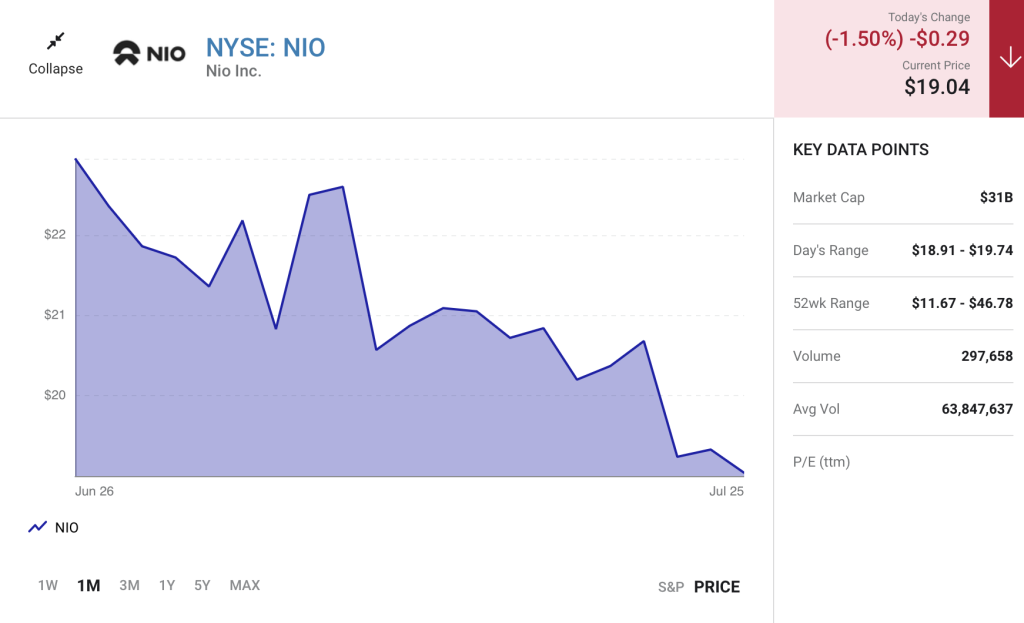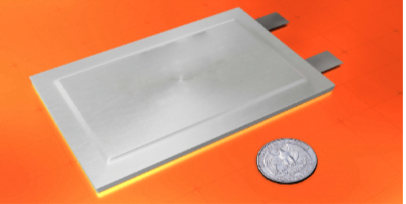Two service models give Nio an edge versus the competition.
The electric vehicle industry is one of the newest, most volatile investment opportunities on the market today. With Tesla (TSLA -3.57%) as the only established industry leader, there is still a great opportunity for start-up electric vehicle (EV) makers to ultimately dominate the market. As of now, Nio (NIO -1.50%) and Rivian(RIVN -1.49%) are ahead of the competition, but all EV companies have faced supply chain challenges as a result of COVID-19. The bear market has also been less than kind to the EV industry; at Tuesday’s prices, Nio’s stock has dropped almost 70% from its all-time high in January 2021, and other companies are struggling similarly.

Among these top three manufacturers, only Nio is based in China. That’s significant, because China was responsible for almost 60% of global exports of electric vehicles in 2021. The Chinese government is also taking several steps in 2022 to boost EV demand, such as introducing subsidies for new-energy vehicles and reducing charging fees. These circumstances balance China’s recent lockdowns, which forced manufacturing plants to halt production for weeks at a time. In two years, Nio managed to increase its quarterly production of EVs from less than 4,000 to more than 25,000. Once supply chain issues are no longer as prevalent, the company should be able to produce more than 500,000 EVs yearly.
Nio’s innovation is the primary reason it’s taking the EV market by storm. Its battery-as-a-service (BaaS) and autonomous-driving-as-a-service (ADaaS) investments set the company apart from the competition. The company’s stock is up roughly 200% since it began trading almost four years ago and gained 24.9% in June alone (the S&P was down more than 6% during that same period), showing that Nio is growing and adapting with plenty of room to grow.
Nio’s battery-as-a-service advantage
Not even Tesla has managed to replicate the popularity of Nio’s convenient battery-as-a-service technology (although that hasn’t kept Tesla from trying). The service allows Nio customers to quickly swap their batteries up to six times per month without leaving their cars. It’s faster than EV charging, clocking in at under three minutes per swap. Compare that to the average time it takes to recharge using a Tesla Supercharger station: The fastest car to charge on average, Tesla’s Model S, charges about 200 miles in 15 minutes — about five times as long as the average Nio battery swap.
Nio purchasers who subscribe to the optional BaaS service snag a discount of Yuan 70,000 ($10,380) off the sticker price. Subscribers pay a monthly fee of Yuan 980 (about $145) that includes a 70 kilowatt-hour (KWh) battery. For reference, the average cost to charge a Tesla is around $14. And it costs around $4 to $5 per 100 miles using at-home charges, which can cost between $800 and $2,000 in installation fees.
China has supported the rollout of these BaaS stations, even going so far as to give Nio special tax exemptions for luxury vehicles. In July, Chinese state television reported that the government is considering extending existing tax breaks for EVs.
Not one to limit itself to China — the largest national consumer of EVs in the world — Nio has expanded its BaaS network to Norway and discussed opening some of its European BaaS stations to other carmakers, giving it potential leverage similar to Tesla’s Supercharger network. If this pans out, Nio’s growing network of BaaS stations could be a major growth lever as competition in the EV space heats up.
Currently, Nio has the largest battery-swap network by far. This could be because BaaS stations are expensive to install. However, Nio claims that its newest battery-swap stations are half the cost of prior stations, which had cost $500,000 per installation. In addition, battery-swap stations require Nio to create a surplus of batteries to be swapped, a high up-front cost that grows with scale. Investors could argue that despite the cost, Nio’s scale creates a wider competitive advantage down the line, especially versus companies attempting to imitate Nio’s battery-swap service. Drivers will turn to Nio to reduce range anxiety. As the EV industry continues to grow, this competitive advantage could easily outweigh the costs in the long run.
BaaS is a sticky service and potentially a competitive moat. Customers probably won’t want to ditch the convenience of BaaS for slower, more cumbersome EV-charging stations offered by companies like Tesla (though Nio is also rolling out its own charging network). Things only get more interesting for this large-cap growth company when you factor in Nio’s second service advantage.
Nio is steering customers to a hands-free future
Nio offers self-driving capabilities to drivers through its autonomous-driving-as-a-service platform. According to the president of Mobileye, a world leader in computer vision for ADaaS, the company will collaborate with Nio to enable Level 4 electric autonomous vehicles for both consumers and robotaxi fleets. At Level 4, cars are expected to be perfectly capable of operating without a human behind the wheel.
The potential runway for autonomous driving is huge. Estimates pegged the 2021 Chinese EV market at about $124 billion. Cathie Wood’s ARK Invest estimates that the Chinese autonomous driving market will expand to $2.5 trillion by 2030. A more conservative estimate by McKinsey research pins it at $2 trillion by 2040, which is still massive. Both analysts believe China has the opportunity to become the largest market for autonomous driving products and services.
Recently, Nio has announced an upgrade to existing self-driving models with an advanced system called Alder. As the car’s cockpit and sensors become smarter, so will the self-driving capabilities of the car. According to a 2021 study conducted by 42Mark, while Tesla’s Model 3 beats Nio’s E6 in basic ADaaS performance (lane changing, congestion, etc.), Nio’s E6 outperforms the Model 3 in navigation-assisted ADaaS and automatic parking. Drivers familiar with Tesla should have plenty of confidence in Nio’s ADaaS capabilities.
Nio deserves a second look
American investors are understandably wary of Chinese investments right now. The stock market is down, a recession looms, and heavy-handed Chinese regulation has blown the valuation clean off former pandemic darlings like Alibaba (BABA 0.38%) and Tencent (TCEHY -1.15%), which are down 15% and 29% year to date, respectively. However, the Chinese government’s newly demonstrated support of the EV industry only serves to enhance Nio’s growth prospects.
Nio’s innovation has the potential to help the company overcome the bear market and emerge as a major player in the ever populated EV market. This company seems to have a bright future due to its numerous advantages over competing EV manufacturers. Its battery-as-a-service and autonomous-driving-as-a-service technologies allow Nio to rise above its competitors, making Nio a growing company that is certainly attractive to risk-tolerant investors. Warren Buffett’s mindset applies here: The market is fearful, which means it’s time to get greedy. Nio is worth a small portfolio allocation.






